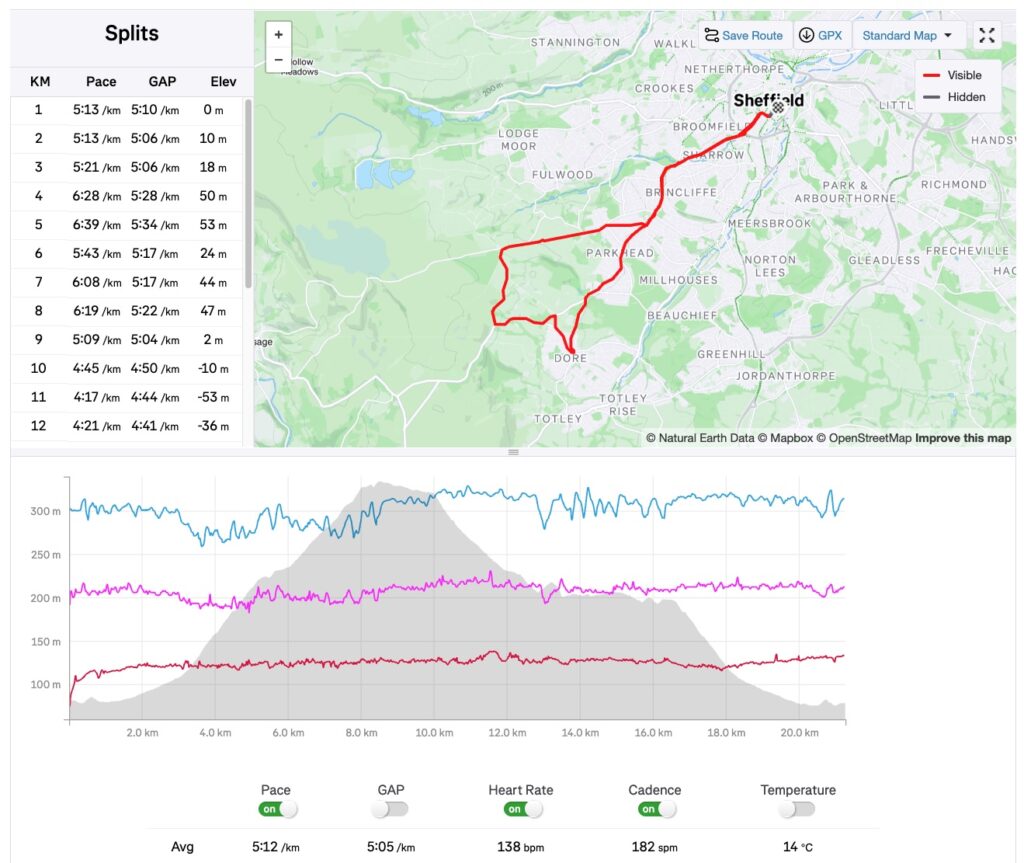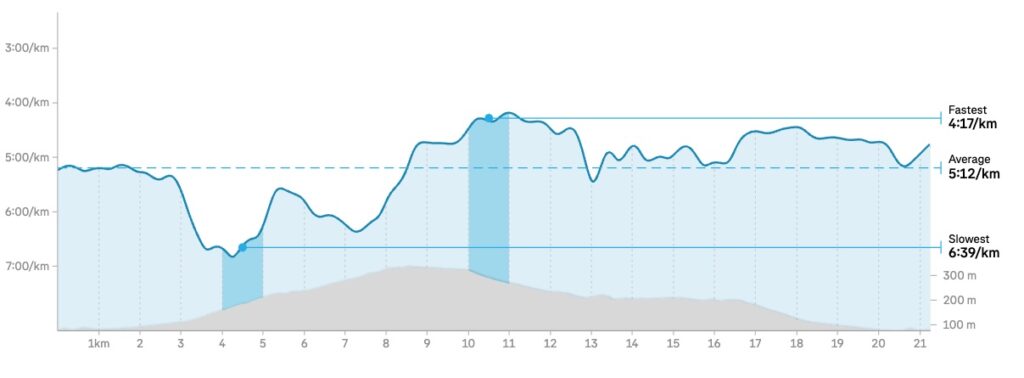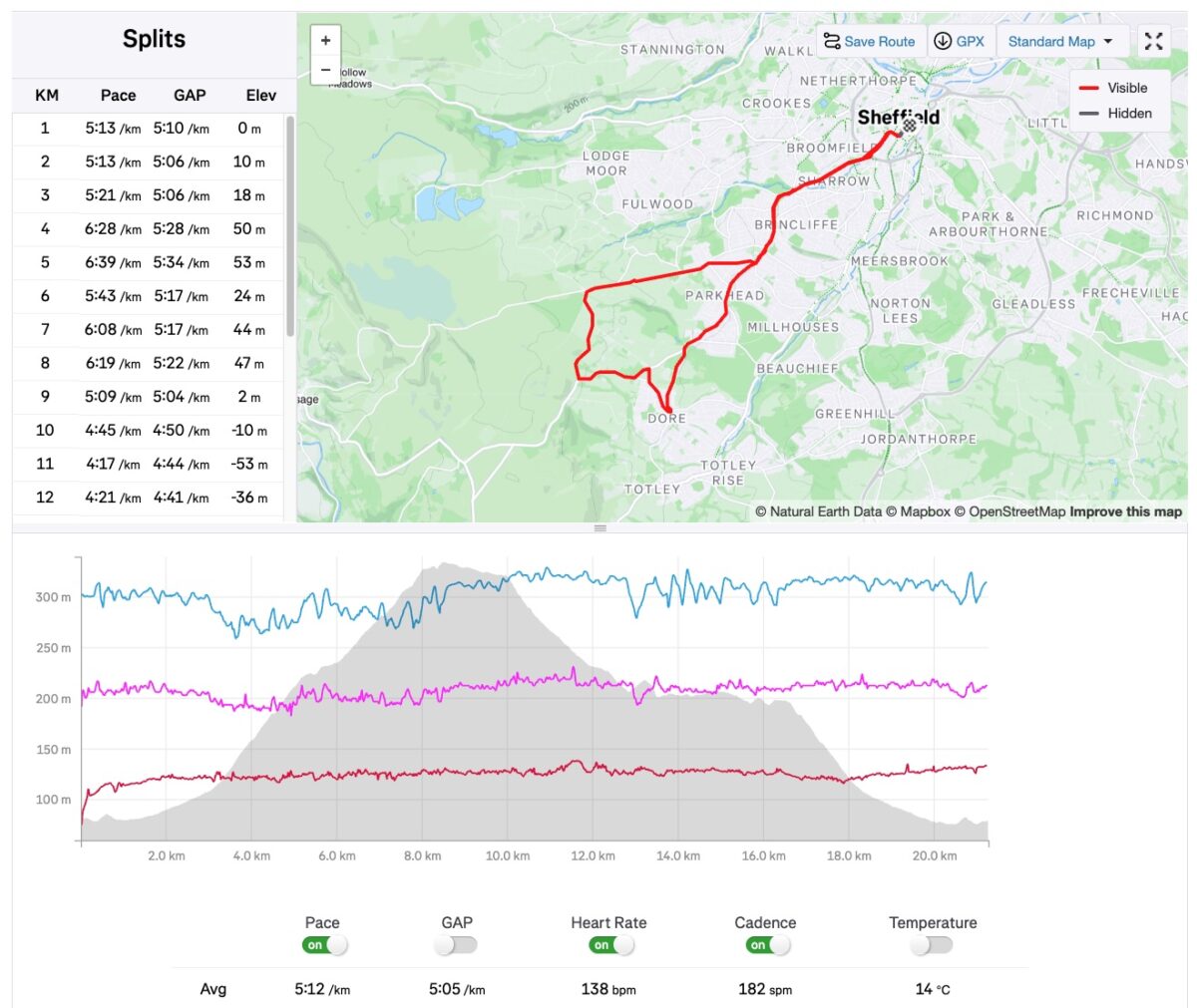The chart below is from last weekend’s Sheffield Half Marathon, and I think it illustrates my approach to running. While I call this my theory, it’s really an adaptation of great work by experts like Phil Maffetone, Matt Fitzgerald, and coach Mike Trees, refined through trial and error to match my body.

This part of the theory is all about managing heart rate to sustain effort effectively.
The first 8 km of the Sheffield Half Marathon are uphill, with some steep sections (shown in grey on the chart). At my current fitness level (a bit below where I’d like it to be), I know that I can comfortably run with my heart rate at 135 bpm for a couple of hours without hitting the wall.
The Strategy: Uphill vs. Downhill
- Uphill: To keep my heart rate steady at 135 bpm, I slow down. Instead of reducing cadence, I take shorter strides while maintaining a cadence of around 180 steps per minute. You can see on the chart that during the climb, my heart rate stayed near 135 bpm, my cadence remained just under 180 spm, and my pace slowed to over 6:00 min/km on steeper sections.
- Downhill: On the descents, I lengthen my stride while keeping my cadence at around 180 spm. This naturally increases my speed, peaking at 4:17 min/km for some sections.
- Final Stretch: Towards the end of the race, I’m happy to let my heart rate climb, knowing that I only need to sustain the effort for a limited period.
Key Takeaways from This Race
- Cadence: Average 182 spm – exactly on target.
- Heart Rate: Average 138 bpm, with most of the race at my target of 135 bpm and a controlled increase toward the finish.
- Pace: Average 5:12 min/km, though the actual pace fluctuated—slower uphill, faster downhill, and steady on the flat sections.
Pace as an Outcome
For me, pace is an outcome, not a target, instead of chasing a set pace. What I do is:
- Control my effort using heart rate.
- Maintain my preferred cadence (180 spm works well for my short legs).
- Let pace be the result.
If I’m fitter, I can sustain a higher heart rate for longer. If I’m less fit, I manage the effort to stay within my limits. Simple as that!
Some of you probably think a heart rate of 135 is pretty modest. As you age, the maximum rate your heart can beat reduces. I am 68 years old, meaning the average maximum for my age is about 152 beats a minute, so 138 beats per minute would be around 90% of my maximum. Actually, my max is a bit higher, so 138 is about 86% of my maximum.
The chart below gives a clearer picture of how much my pace varied, because I ran with an equal effort, not an equal pace.

